“Seven years ago this month, we suddenly went from being parents of three healthy, young children, to becoming parents of a child with a rare disease called Sturge-Weber Syndrome. Nothing could have possibly prepared us for this role. It turned our world upside down repeatedly and introduced a level of suffering we didn’t know we could endure. But it has also given us so much… more than it’s taken, really. Looking back on it all helps us appreciate just how far we’ve come.
Silas entered the world on June 28th, 2012, seven weeks earlier than expected. His twin sister, Celia, was ready for an early check-out from their shared room, and as we’ve learned, her indomitable will is hard to bend once it is set.
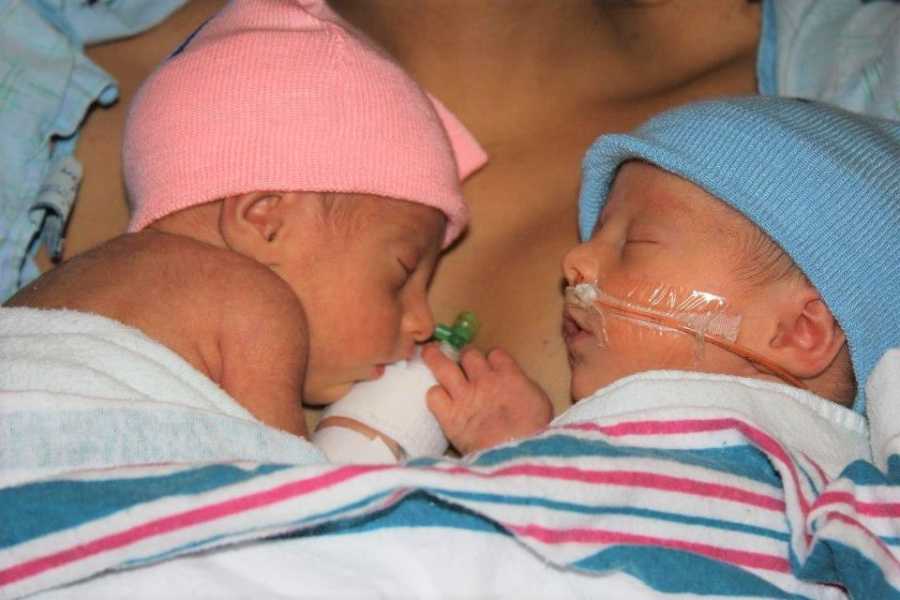
Many Sturge-Weber Syndrome babies are identified immediately upon arrival with the appearance of the hallmark ‘Port Wine Stain,’ a deep purple birthmark which often covers a significant portion of the newborn’s face. Silas emerged with just a faint pink discoloration down the middle of his forehead. Hardly noticeable at the time and easily dismissed by doctors and nurses lovingly as a ‘stork bite’ or ‘angel kiss’ which would soon go away.
We spent a full month in the NICU (which gave us time to build their cribs!) while our preemies ate, rested, and grew. My husband and I traded shifts battling Chicago rush hour traffic to commute downtown to be with the twins and home in the suburbs with our two-year old daughter. It was an intense month of juggling schedules and emotions, but everyone was healthy.
Sturge-Weber Syndrome was lurking, but we were blissfully unaware. It took a few months to learn how to keep our heads above water with newborn twins and a toddler at home. It felt like we were drowning on occasion, but we figured it out. I now cherish the memories of those first few months watching our baby boy grow. My thoughts untarnished by a terrifying, uncertain future.
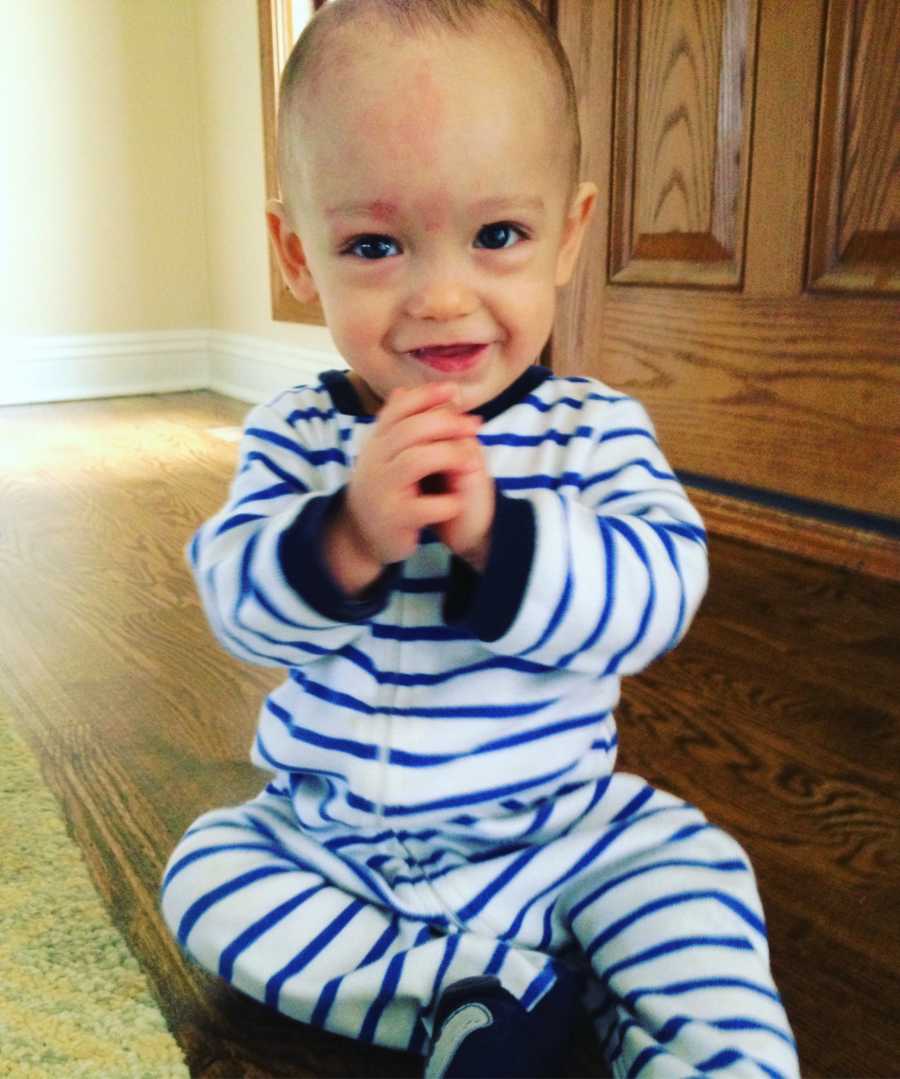
At 10 months, everything changed. On a quiet Saturday morning, Silas had his first seizures. They weren’t the shaking, convulsing kind (tonic-clonic) which are universally recognized as a seizure. In fact, he probably had several, subtle ‘focal’ seizures where his pupils would pin downward and his eyes would close. They lasted just a few moments and were easy to miss when we weren’t looking. But it was curious why he was acting so groggy and off balance. We took him to a walk-in pediatrician appointment where he was diagnosed with a slight ear infection and prescribed antibiotics. That explains it! Not so.
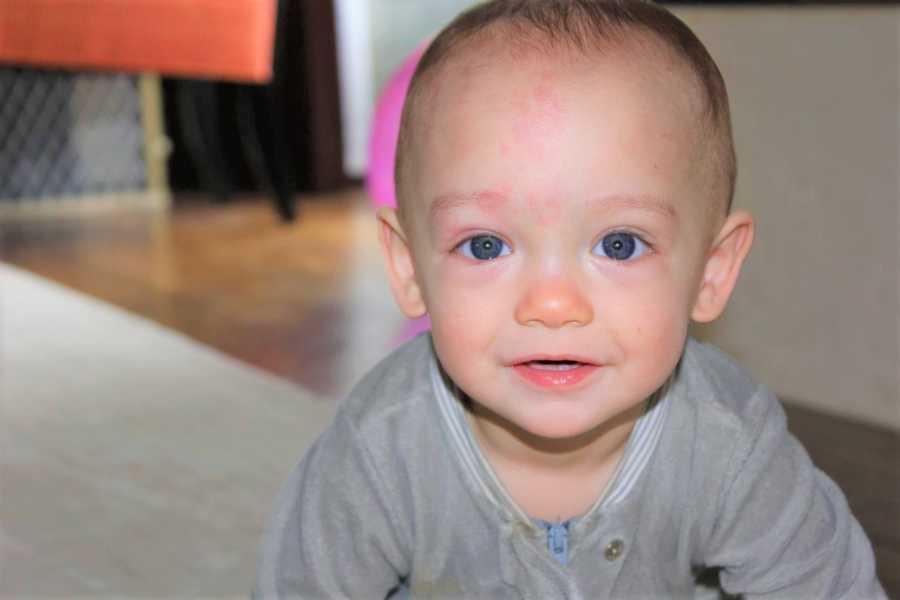
Later that day, we witnessed his eyes pinning and closing, and watched in horror as he became listless and unresponsive for a full minute. On the phone his doctor demanded we get to the nearest hospital. We rushed off in that state of shock where the world has stopped making sense. Terror gripped us. What was happening to our baby boy?!
After three days in the hospital and a battery of tests, we knew for certain he was having seizures, but the cause was undetermined. Brain imaging did reveal grave cause for concern. Two parts of his brain, one on the surface and one ‘deep in the middle of his brain,’ had been identified as abnormal. A few unsettling possibilities were suggested, yet it would take three agonizing weeks to confirm a diagnosis of two words we had never heard before: Sturge-Weber.
On May 8th, 2013, we had a neuro-angiogram done, a harrowing procedure for a baby, which confirmed what had been suspected by two radiologists we consulted with: Sturge-Weber Syndrome. We didn’t like it, but at least the cause had been identified.
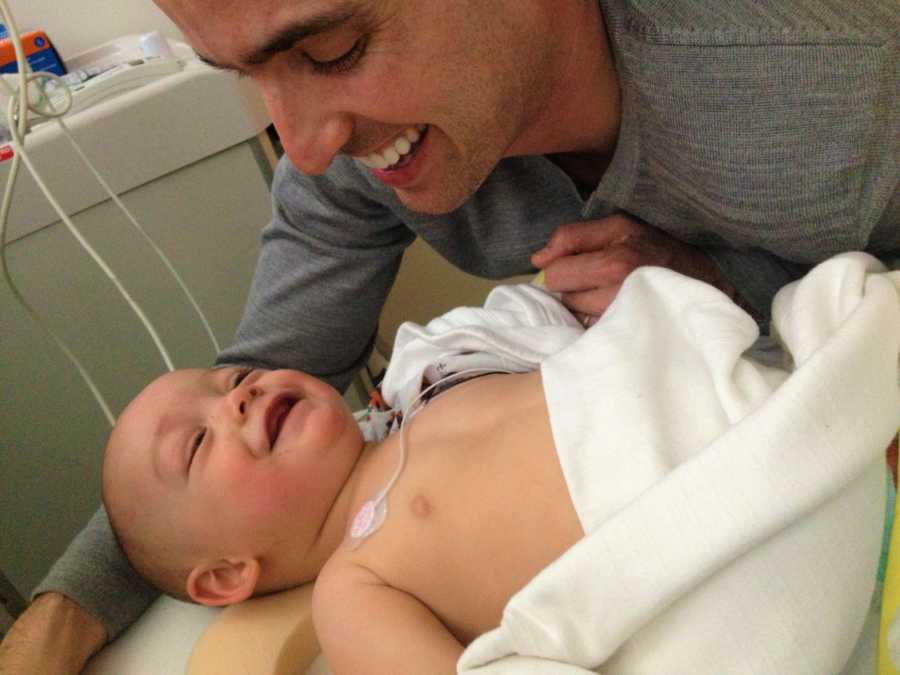
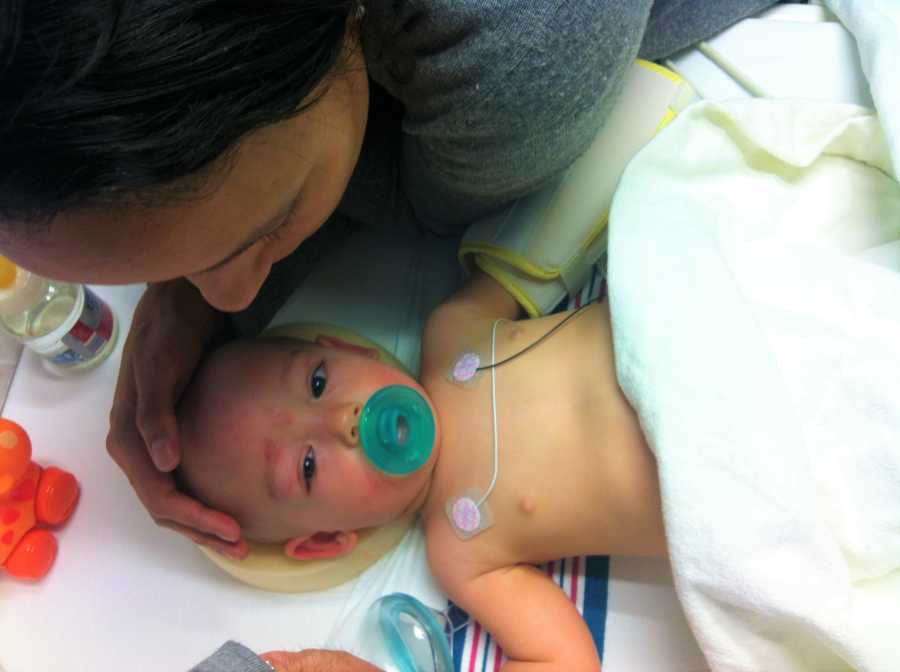
Sturge-Weber is a vascular malformation which can cause an enormous range of complications in the skin (Port Wine Stains), eye (glaucoma), and brain (seizures, learning disabilities, etc.). An early consultation gave us some comfort since his skin and eye were only minimally involved, he was at low risk for glaucoma and his PWS wouldn’t cause trouble. His brain involvement was ‘extensive,’ but only time would tell what the impact would be. You learn quickly that for all our advancements in science and technology, the brain remains a mystery.
With our future uncertain, we held tight to the present and watched our baby boy closely for signs of this wretched affliction. Amazingly, none came. He hit every early milestone right alongside his twin, and we soon let our fears recede to the background. With the exception of a single breakthrough seizure when he was sick, around the age of 2, we were mercifully left relatively unscathed by Sturge-Weber Syndrome for over four years.
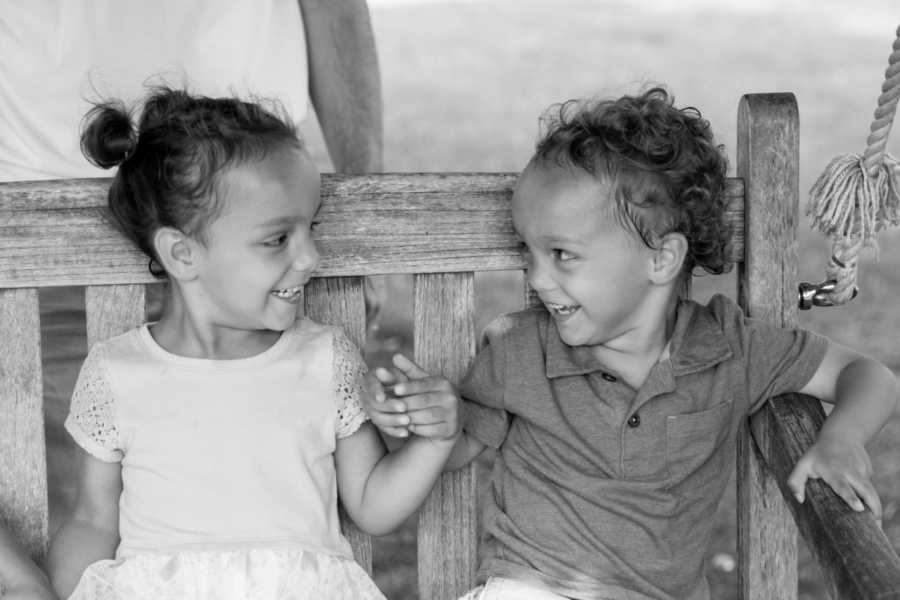
We were one of the lucky ones. So lucky in fact, Silas’ neurologist suggested we should give him a chance to come off his medicine, since it had been over three years since he’d had a seizure. Brain medication is scary, and we wanted to give him a chance to live without them. But a nagging part of us was concerned we might be opening Pandora’s box. The head of pediatric neurology at one of the most prestigious hospitals in the world recommended it, so we followed his advice. It’s a decision that haunts us to this day.
After 48 hours completely off his medicine, on a gorgeous fall evening, Silas’ seizures came ROARING back with a vengeance. Like nothing we had ever experienced. Unlike his other seizures, he didn’t snap back out of this first one. For the better part of three days, he was almost completely out of it as wave upon wave of seizures racked him. On his fourth morning, he seemed to be coming around — waking up a bit, taking his meds, and his fever starting to drop. We let ourselves breathe, and even snuck in a nap.
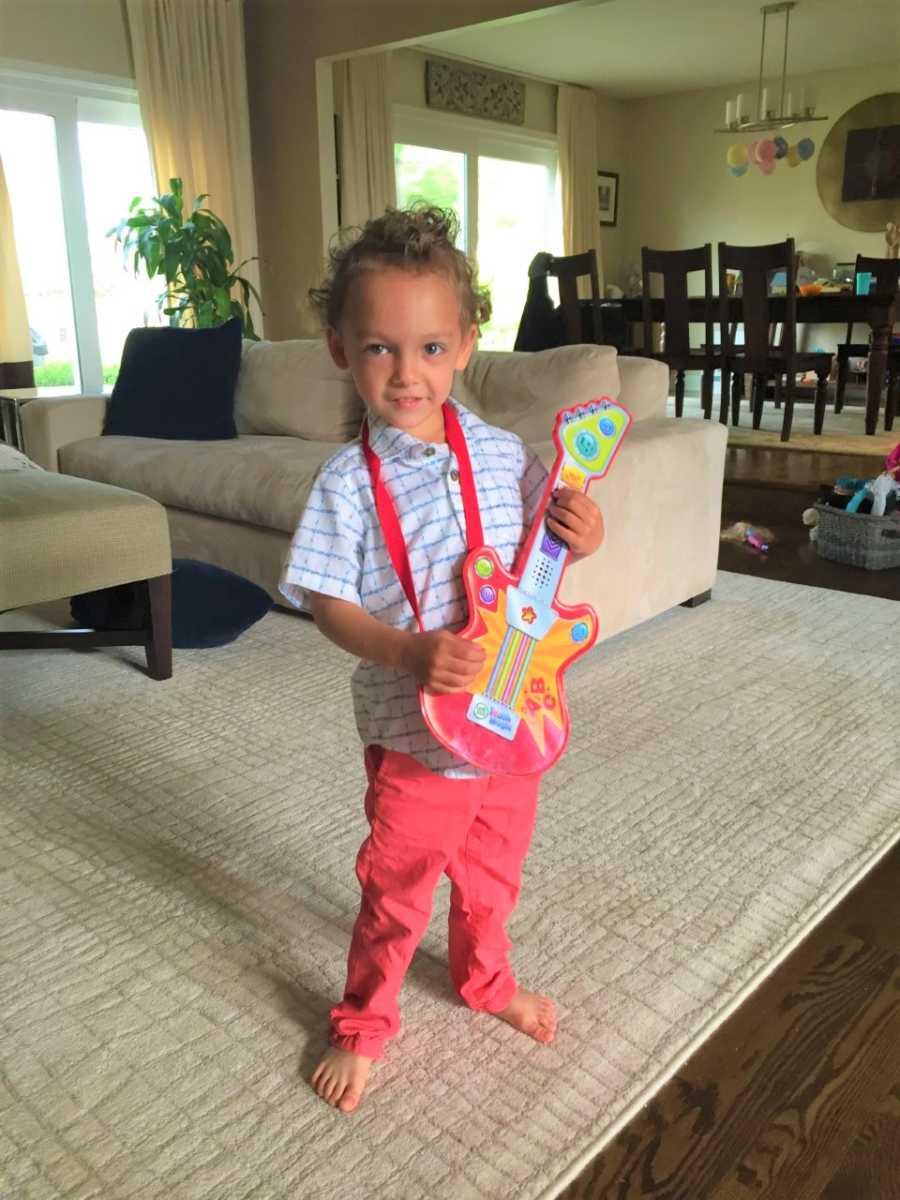
Sadly, it turned out to be the eye of this awful hurricane. A few hours later, he went into status epilepticus (non-stop, uncontrolled seizures) and the doctors had to use the nuclear option of medicine which would stop the seizures… and his breathing. We sat by our baby boy’s bedside in a state of utter despair, as he was intubated and unconscious.
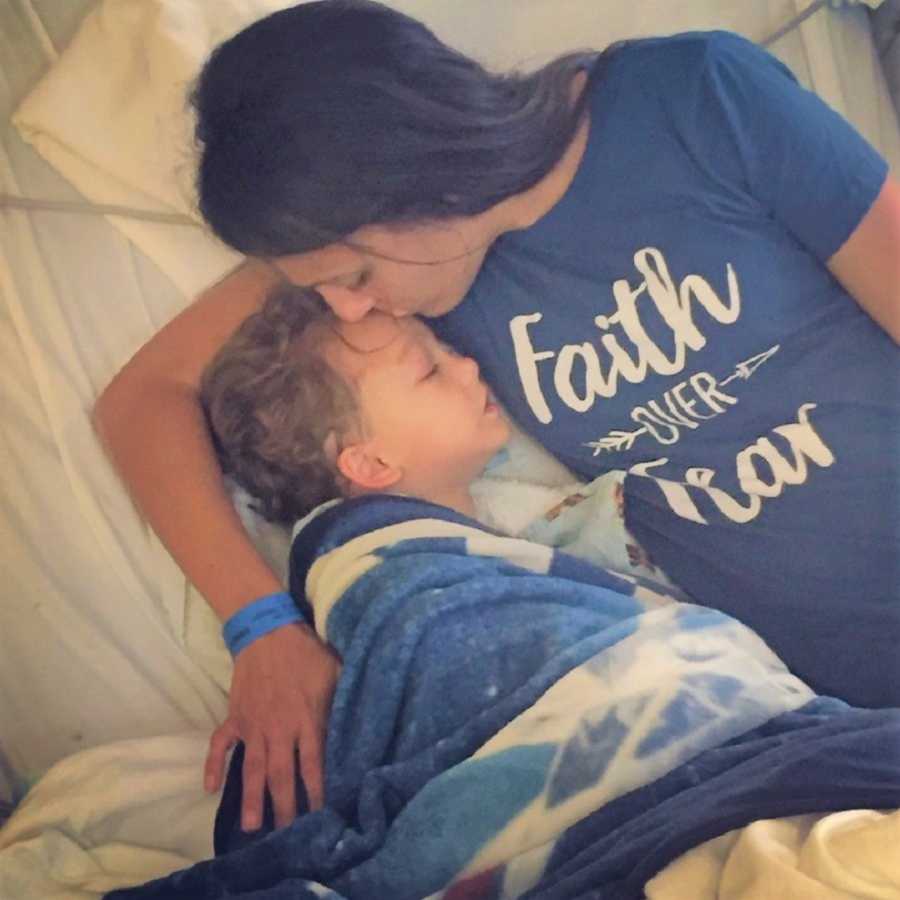
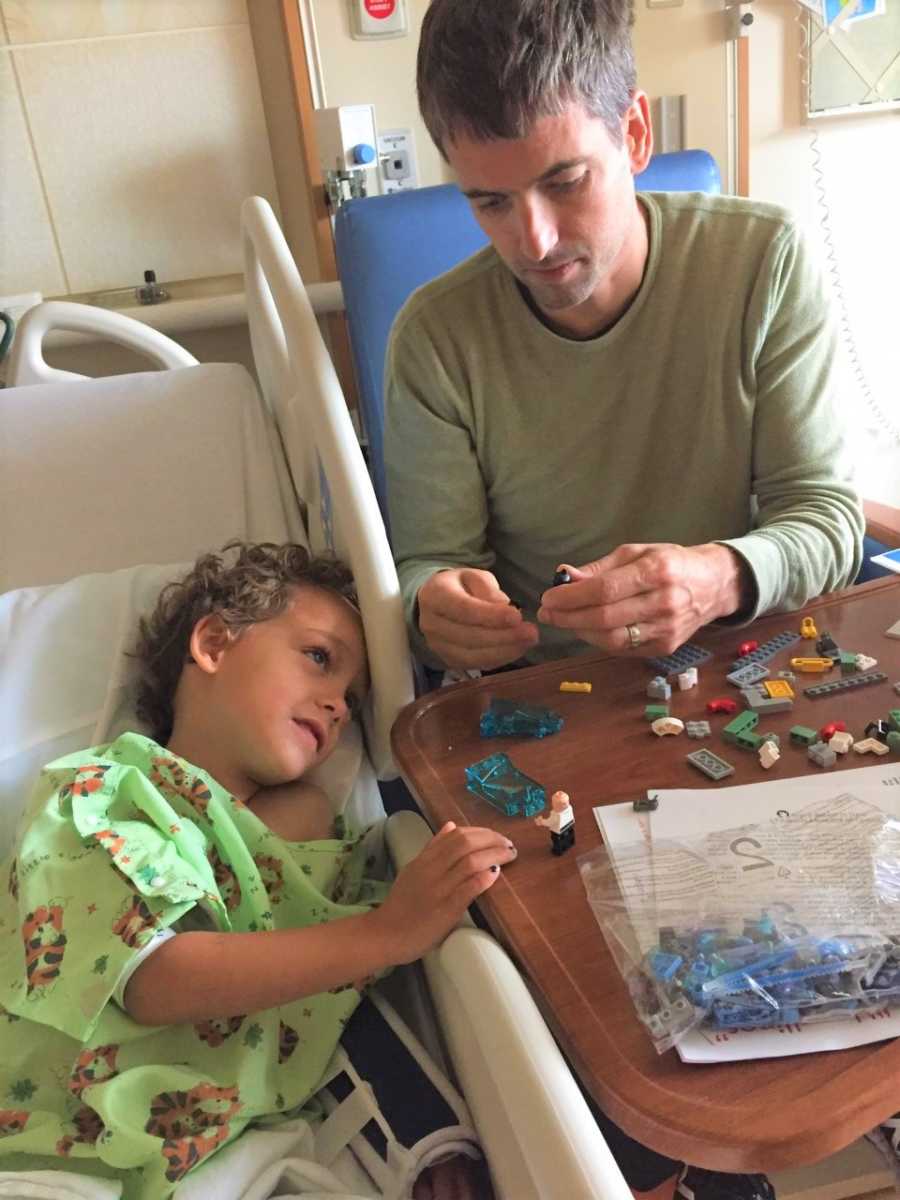
Then, miraculously, 24 hours later his recovery began. His progress was remarkable, and five days later we left the hospital. With a sigh of desperate relief, we prepared to end the scariest chapter of our lives. It was short lived.
Less than 24 hours later, Silas was agonizing on the couch with a crushing headache. Another round of mysterious seizure-like activity had begun. Like a recurring nightmare we couldn’t wake from, the exact same progression of events unfolded. We were back in the same hospital. In the same elevators. The same doctors. We unwillingly checked back into hell for another 10 days.
For a total of three weeks, Silas endured these merciless waves of assault on his mind and body. Yet through it all, he hardly complained. He was such a strong boy. Much stronger than his parents.
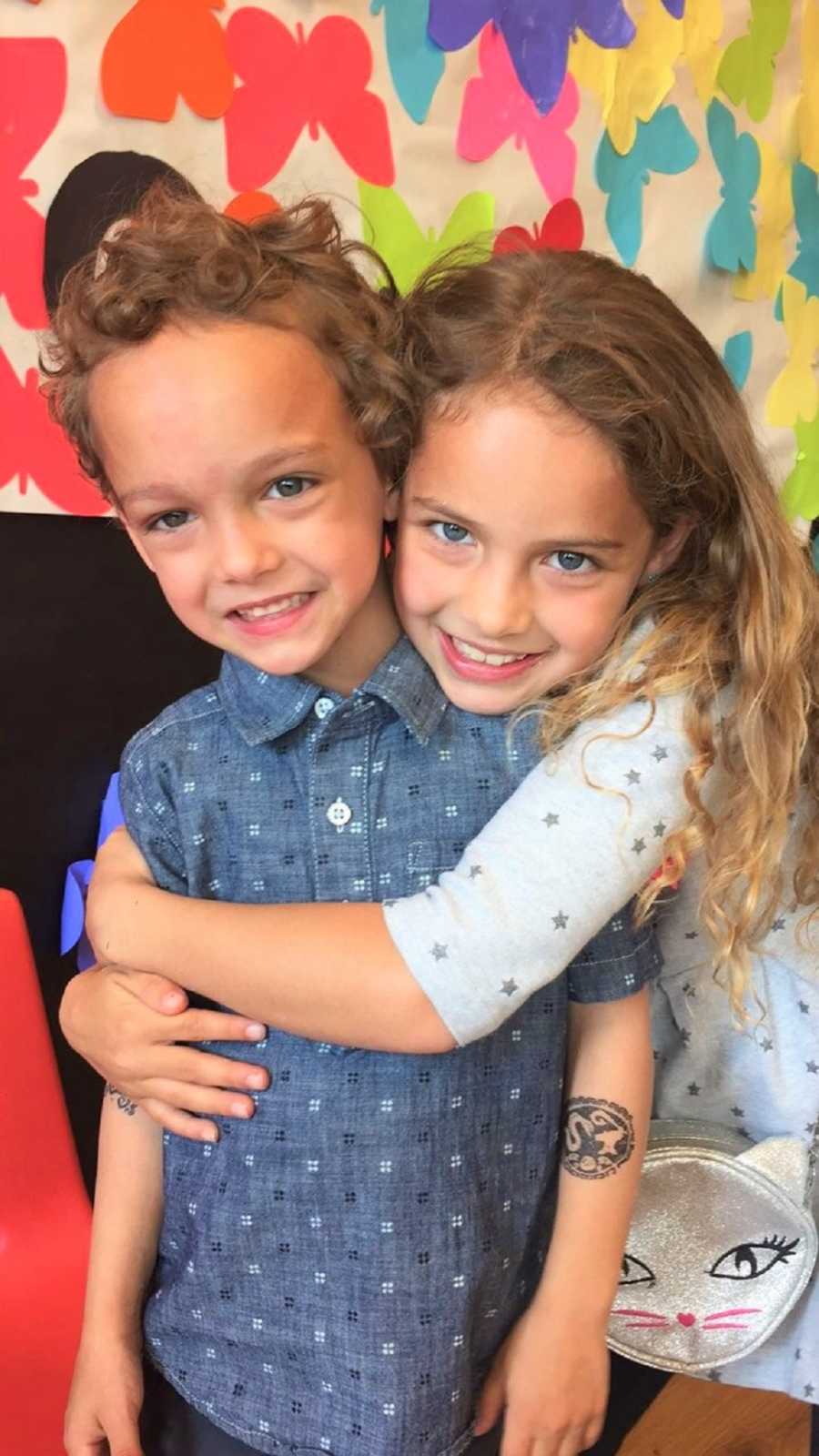
We were finally able to return home for good in late September. He officially joined his kindergarten class, and three weeks later, was on the soccer field playing like he’d been practicing with the team all along. His resilience was staggering. We returned to a hospital free existence, and Silas’ Sturge-Weber and epilepsy went dormant again. It took a few months to be able to fully exhale and settle back in, but we did.
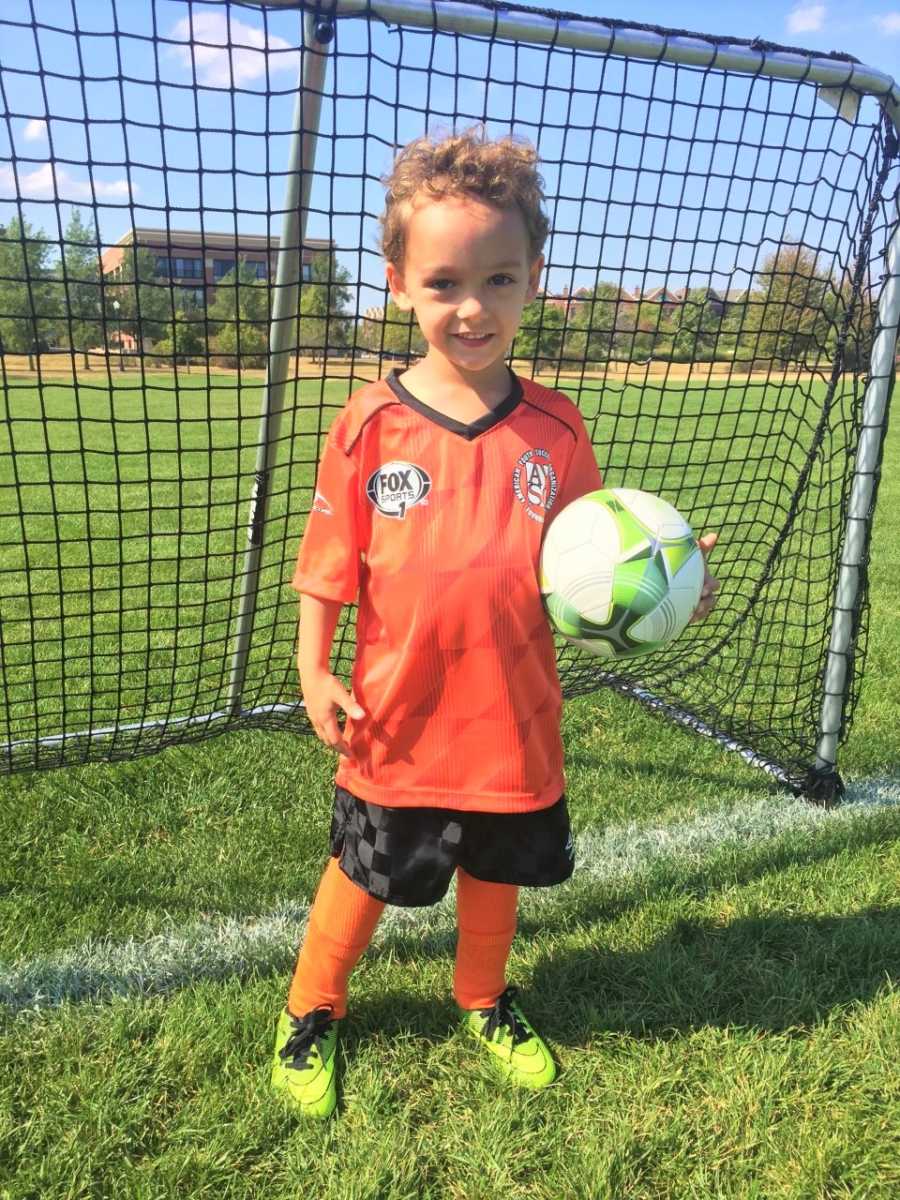
Then, as the calendar flipped to January of 2019, Silas lost his balance while walking down the hallway. No big deal, he was just tired from dance practice. But 10 days later, he fell again. This was weird. Our sixth sense told us something was up. But his doctor, the same one, wasn’t concerned.
It finally became undeniable he was having ‘drop’ seizures. A new and most unwelcome evolution of his Sturge-Weber Syndrome. It looks like a light switch flips for a split second. Sometimes it was just a quick head jerk. Other times he was knocked backward off his feet, like he’d been hit by an invisible linebacker.
As they progressed in frequency and intensity, we switched doctor’s and hospitals and had an overnight EEG performed. It took three hours for his new doctor to confirm the changed brain activity and give us a game plan. The change in approach was jarring at first. It required new medications with terrifying new side effects. We had to immediately recalibrate from our former doctor’s laissez-faire approach to this new, proactive assault on his condition.
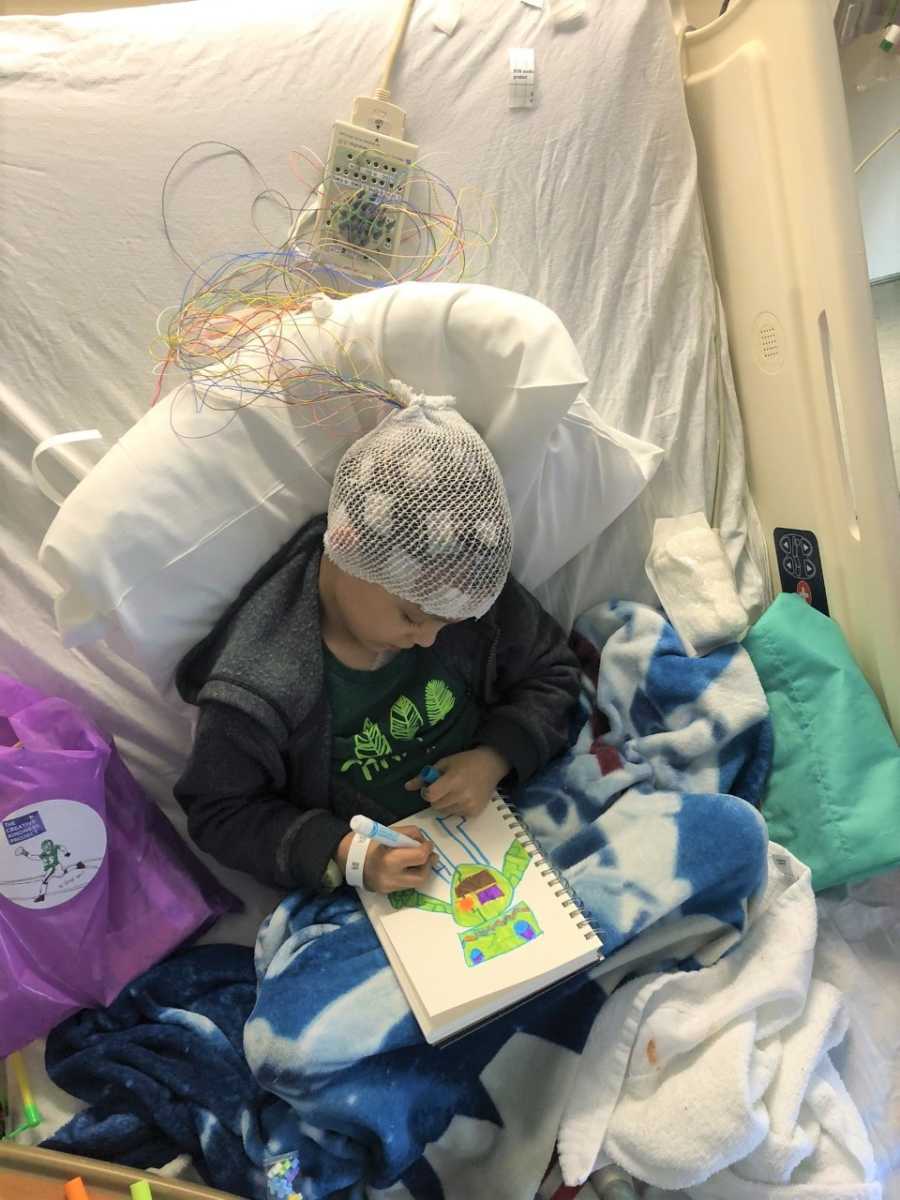
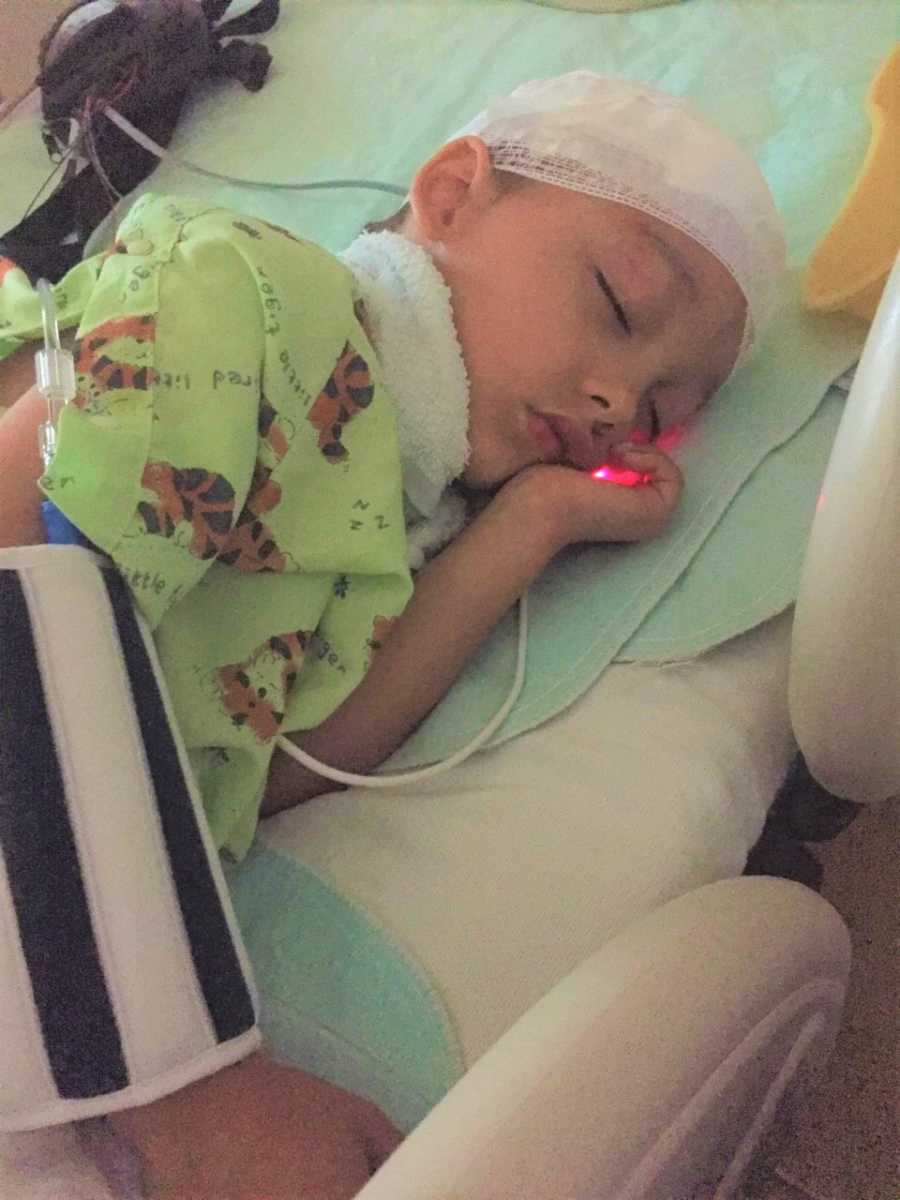
For three agonizing weeks we watched Silas have a dozen or more seizures every day as we waited for his new medication to start working. Each day hoping it would be the day. Our spirits would be dashed within an hour of his waking. The vice grip of anxiety we lived with was relentless.
For the first time in his life, Silas is now able to articulate his emotions, and this is the hardest part of all. ‘Why does this keep happening to me? When will my Sturge-Weber go away?’ Ughh… He continued to go to school but couldn’t play outside at recess. I drove them to school so they didn’t ride the bus. His classmates got used to reporting his falls to the teacher. Mercifully 1st graders are still sweet little kids.
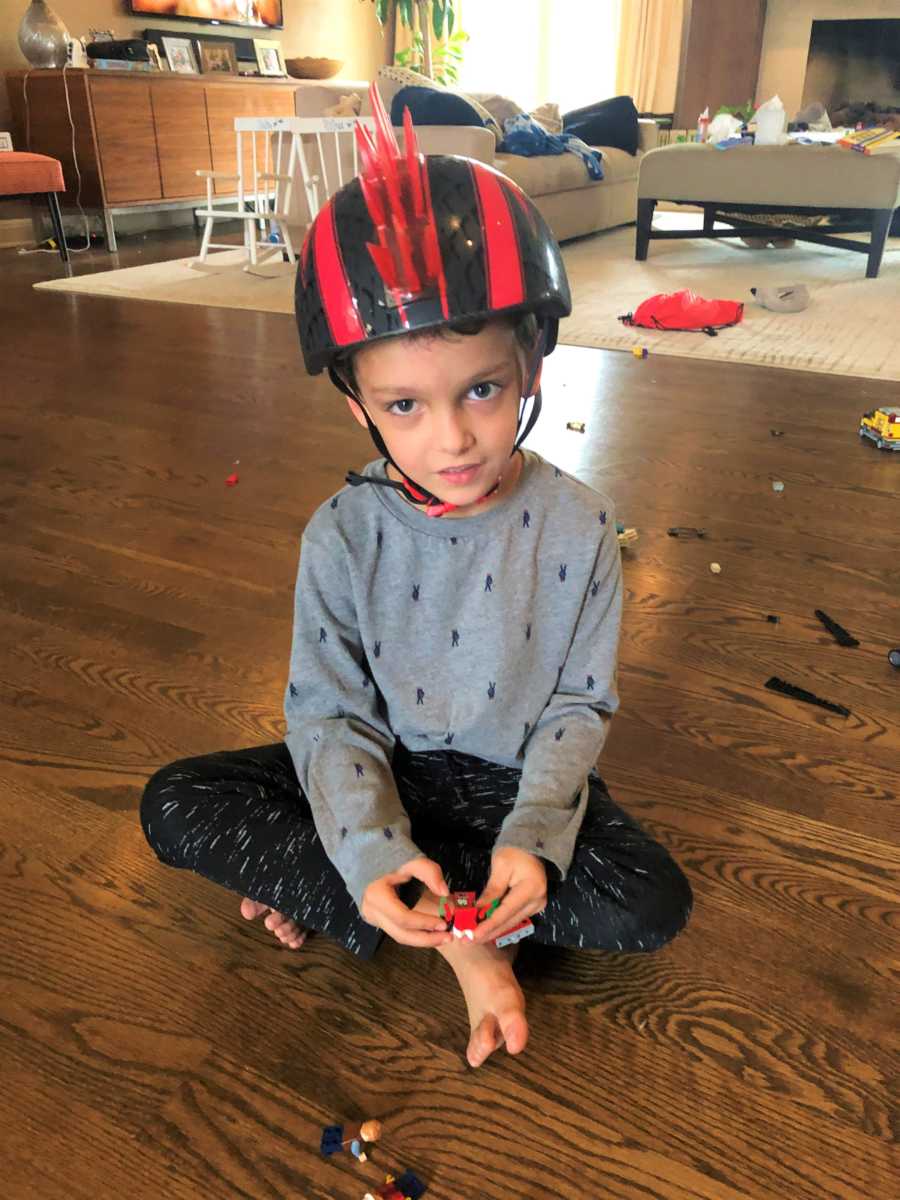
A third drug was added to the mix after four weeks. He stopped falling after three days. One day seizure free turned to two. Then a week. A month in, we exhaled again and felt confident the disease had again recessed to the shadows.
He has been seizure free for a year now. He is thriving in second grade, somehow keeping up academically in every way. Our strong, determined little boy.
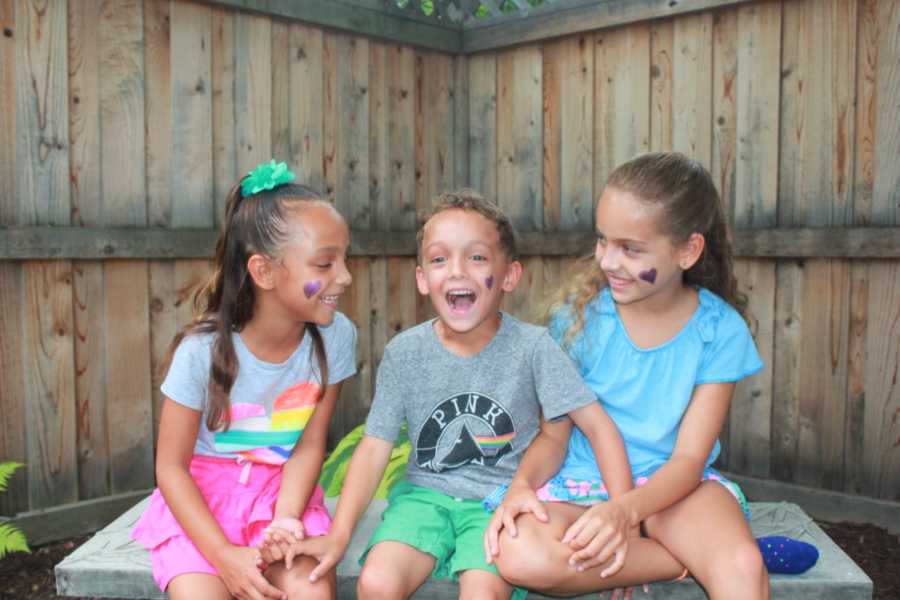
Sturge-Weber Syndrome and epilepsy, like all adversity, offers valuable wisdom and hard earned perspective. We’ve given up on the false idea of ‘normal.’ Our life is a beautiful mess just like everyone else’s. We’re all climbing our own mountains and dealing with life’s endless variety of struggles. We’ve realized the hardest moments are the flip side of the coin to our most beautiful. You can’t have one without the other.
We tell Silas stories about people who have done amazing things with their life after traumatic childhood illnesses. His challenges are strengthening and preparing him for life in a way a small minority of people are. It will serve him well.
And with every episode we get stronger as a family. Our mission has become to advocate and raise as much money and awareness as we are able to help advance research for a cure.
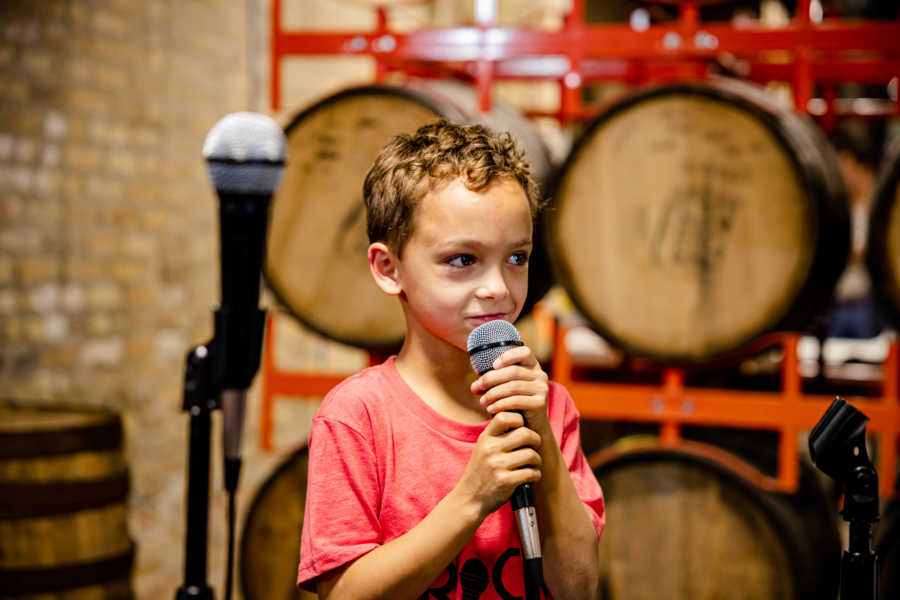

We wouldn’t have chosen this path, but the gifts it has given us are too numerous to count. It has made our lives rich in ways we didn’t know existed. We know there will be more mountains to climb, which magnifies our gratitude for every healthy day. There is so much beauty and love in this big messy world. Silas’ life has helped us see it more clearly.”
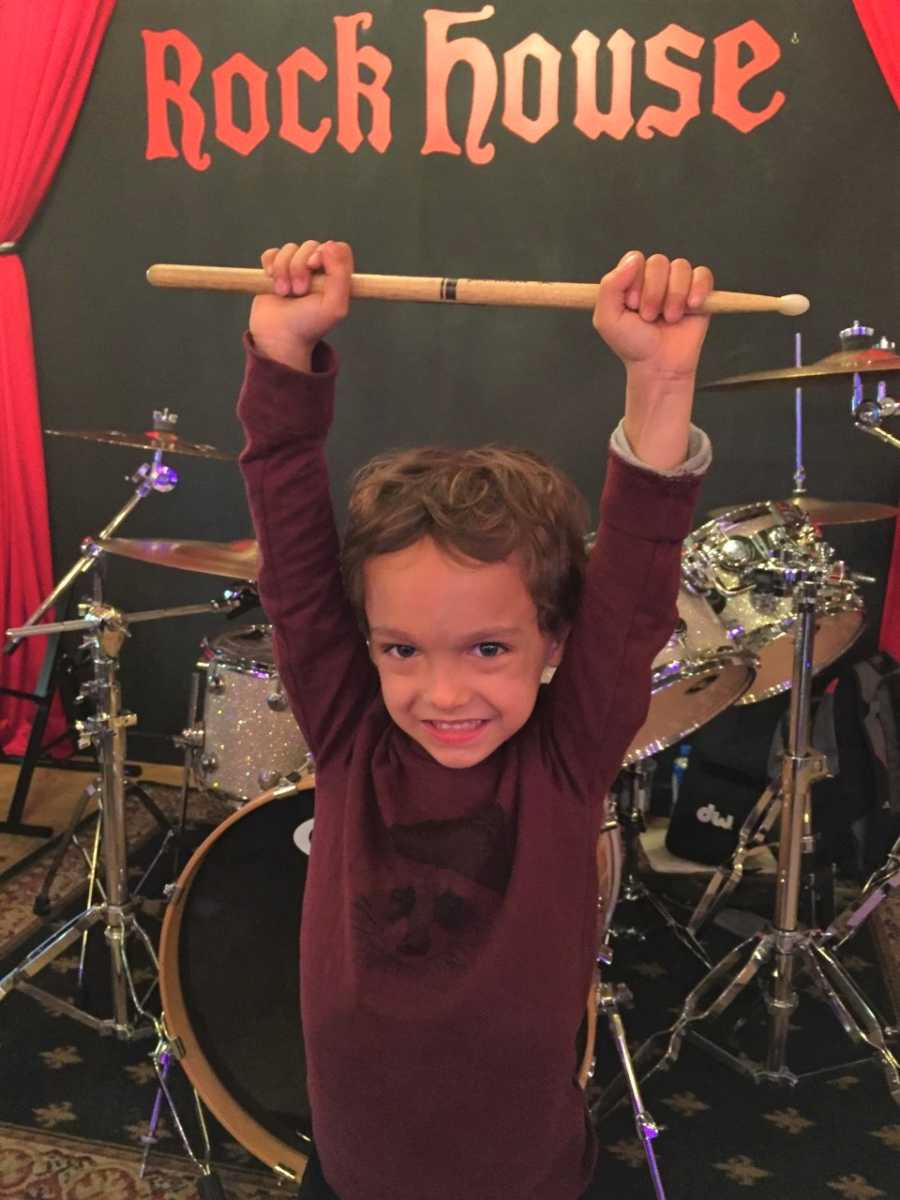
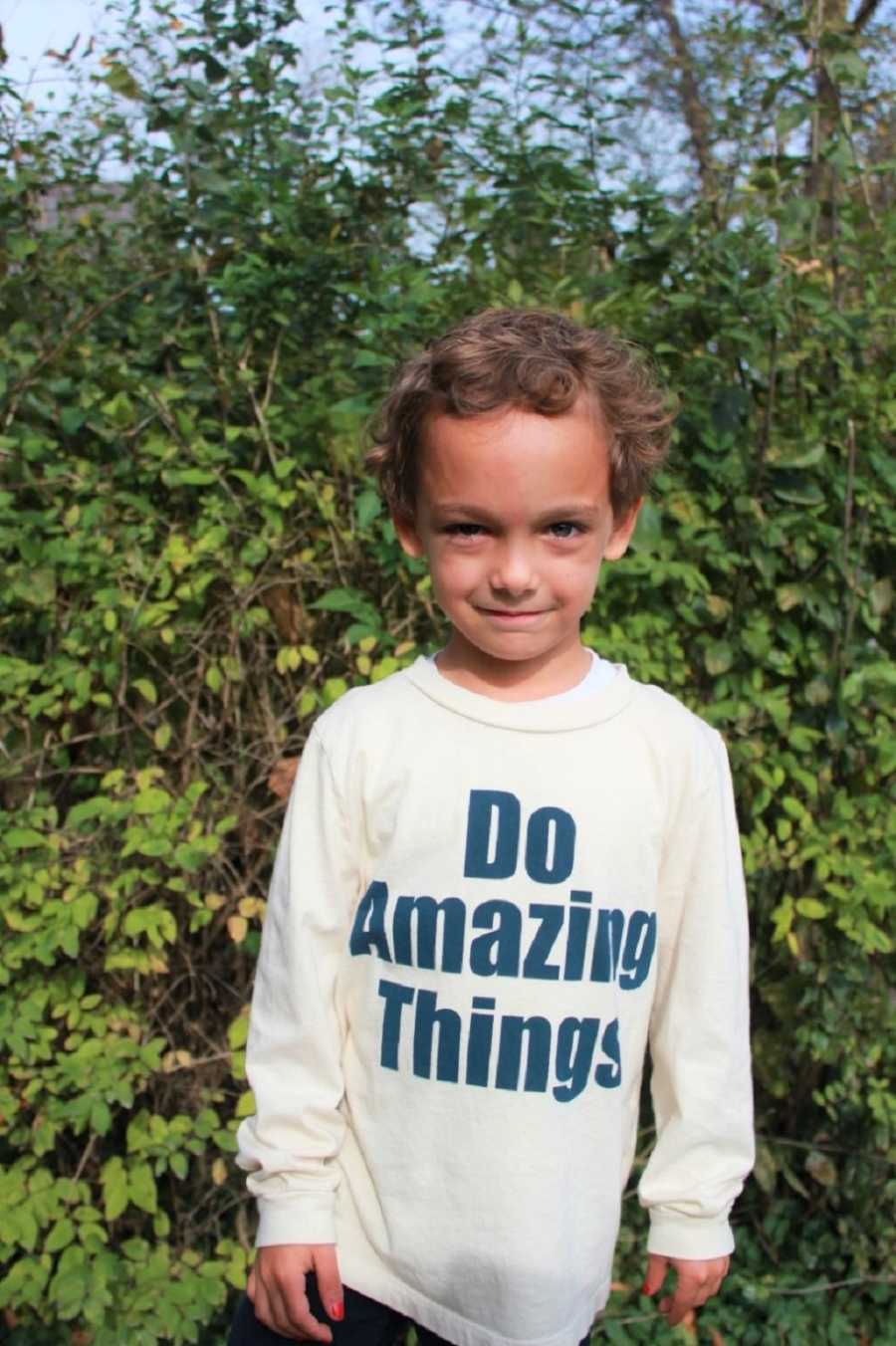
This story was submitted to Love What Matters by Kellie Sadens of Glenview, IL. You can follow their journey on Instagram and Facebook. Do you have a similar experience? We’d like to hear your important journey. Submit your own story here. Be sure to subscribe to our free email newsletter for our best stories, and YouTube for our best videos.
Read more stories like this:
Spread beauty and strength for others. SHARE this story on Facebook with family and friends.

